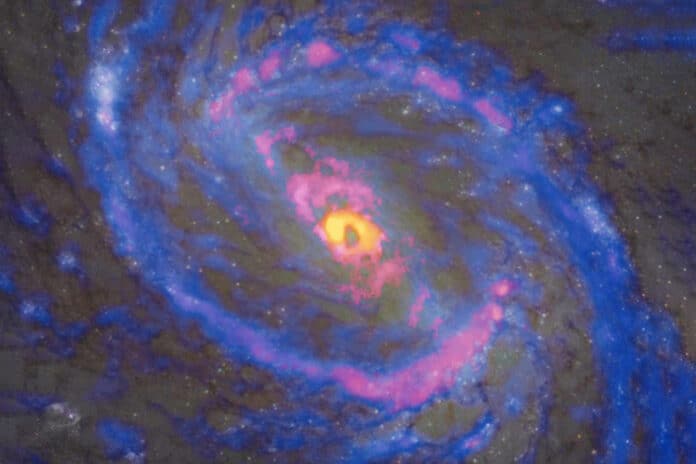It is commonly known that by heating up and eliminating the galaxy’s interstellar gas, active supermassive black holes can cause significant changes in their host galaxies. However, it has been challenging to estimate the chemical composition distribution of the gas surrounding an active supermassive black hole due to the small sizes of black holes, their great distances from Earth, and galactic dust obscuration.
According to recent findings, the supermassive black hole at the center of a galaxy can directly affect the host galaxy’s chemical composition. This offers yet more pieces of the evolution of the galaxies puzzle.
Using ALMA (Atacama Large Millimeter/ submillimeter Array), an international team of researchers led by Toshiki Saito at the National Astronomical Observatory of Japan and Taku Nakajima at Nagoya University observed the central region of Messier 77, which is located 51.4 million light-years away in the direction of the constellation Cetus. A galaxy with an active supermassive black hole is Messier 77, which is located quite nearby.
The team was able to map the distribution of 23 molecules due to the great spatial resolution provided by ALMA and a novel machine-learning analysis method. This study is the first to use unbiased observations to describe the distribution of all discovered compounds.
The findings indicate that while the concentrations of peculiar molecules like an isomer of HCN and the cyanide radical (CN) rise, common chemicals like carbon monoxide (CO) that are abundant in galaxies appear to break down along the route of the bipolar jets erupting near the black hole. This provides concrete proof that supermassive black holes impact the chemical makeup of their host galaxies in addition to their large-scale structure.
Journal Reference:
- Taku Nakajima, Shuro Takano, Tomoka Tosaki et al. Molecular Abundance of the Circumnuclear Region Surrounding an Active Galactic Nucleus in NGC 1068 Based on an Imaging Line Survey in the 3 mm Band with ALMA. The Astrophysical Journal. DOI: 10.3847/1538-4357/ace4c7
